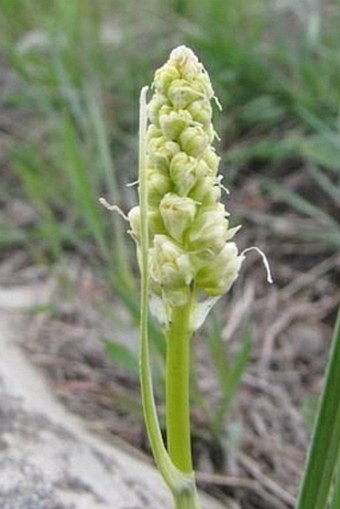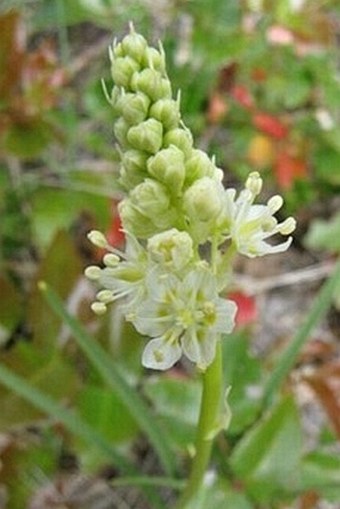Syn.: Toxicoscordion venenosum (S. Watson) Rydb.
Family: Melanthiaceae Batsch

Distribution: North American species, found in the area from south of British Columbia to south of Saskatchewan and west of Dakotas, southward reaches Colorado and even Baja California. Two varieties are recognized.
Ecology: Grows in prairie, both wet and dry meadows, shrubbery, forest margins, grassy slopes, from coast to about 2500 m of elevation. Blooms from May to July.
Description: Perennial herb with underground bulb, 1–3 cm across, in flower 15–70 cm tall. Stem erect, unbranched; leaves grass-like, pale green, 10–50 cm long, 2–10 mm wide. Inflorescence is a terminal raceme, 10–50-flowered, 5–20 cm long; flowers 5–10 mm across, hexamerous, tepals 2–5 mm long, 1–3 mm wide, creamy white. Fruit is a capsule, oblong, 15–20 mm long.
Use: The plant is extremely poisonous, even in dry state they can toxic up to 20 years. Native tribes used it in traditional medicine.
Note: The genus includes 18–22 species, found in North and central America and east Asia. Some literature switches them to genera of Anticlea, Stenathium and Toxicoscordion.



These images were taken in Canada, British Columbia, Fairmont Hot Springs (May 2012).


